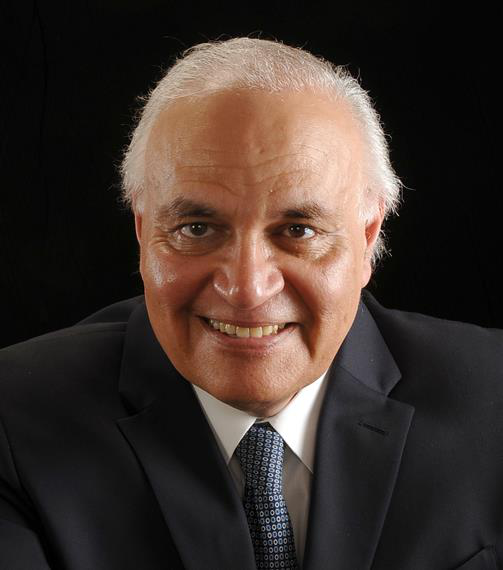 Biograph: Dr. Amin is a Fellow of the Institute of Electrical and Electronics Engineers; Fellow of the International Society of Optical Engineering; Fellow of the Institute of Engineering and Technology; and a Fellow of the European Association for Signal Processing. He is the Recipient of: : the 2017 Fulbright Distinguished Chair in Advanced Science and Technology; the 2016 Alexander von Humboldt Research Award; the 2016 IET Achievement Medal; the 2014 IEEE Signal Processing Society Technical Achievement Award; the 2009 Individual Technical Achievement Award from the European Association for Signal Processing; the 2015 IEEE Aerospace and Electronic Systems Society Warren D White Award for Excellence in Radar Engineering; the 2010 NATO Scientific Achievement Award; and the 2010 Chief of Naval Research Challenge Award. Dr. Amin is the Recipient of the IEEE Third Millennium Medal. He was a Distinguished Lecturer of the IEEE Signal Processing Society, 2003-2004, and is the past Chair of the Electrical Cluster of the Franklin Institute Committee on Science and the Arts. Dr. Amin has over 750 journal and conference publications in signal processing theory and applications, covering the areas of Wireless Communications, Radar, Sonar, Satellite Navigations, Ultrasound, Healthcare, and RFID. He has co-authored 21 book chapters and is the Editor of three books titled, “Through the Wall Radar Imaging”, “Compressive Sensing for Urban Radar”, “Radar for Indoor Monitoring”, published by CRC Press in 2011, 2014, 2017, respectively.
Biograph: Dr. Amin is a Fellow of the Institute of Electrical and Electronics Engineers; Fellow of the International Society of Optical Engineering; Fellow of the Institute of Engineering and Technology; and a Fellow of the European Association for Signal Processing. He is the Recipient of: : the 2017 Fulbright Distinguished Chair in Advanced Science and Technology; the 2016 Alexander von Humboldt Research Award; the 2016 IET Achievement Medal; the 2014 IEEE Signal Processing Society Technical Achievement Award; the 2009 Individual Technical Achievement Award from the European Association for Signal Processing; the 2015 IEEE Aerospace and Electronic Systems Society Warren D White Award for Excellence in Radar Engineering; the 2010 NATO Scientific Achievement Award; and the 2010 Chief of Naval Research Challenge Award. Dr. Amin is the Recipient of the IEEE Third Millennium Medal. He was a Distinguished Lecturer of the IEEE Signal Processing Society, 2003-2004, and is the past Chair of the Electrical Cluster of the Franklin Institute Committee on Science and the Arts. Dr. Amin has over 750 journal and conference publications in signal processing theory and applications, covering the areas of Wireless Communications, Radar, Sonar, Satellite Navigations, Ultrasound, Healthcare, and RFID. He has co-authored 21 book chapters and is the Editor of three books titled, “Through the Wall Radar Imaging”, “Compressive Sensing for Urban Radar”, “Radar for Indoor Monitoring”, published by CRC Press in 2011, 2014, 2017, respectively.
Title: Dual Function Radar Communication Systems
Abstract: The limited nature of the radio spectrum and the explosion in commercial communications services are putting other essential modalities, such as radar, under immense pressure. In this high stakes game, radar is losing out to the commercial interests behind the communications revolution. One of the most pressing problems in the area of spectral congestion and dynamic frequency allocations is to provide uncontested shared bandwidth between radar and communications. This has recently spurred extensive efforts towards devising solutions for simultaneous operations of radar target illuminations and wireless services using the same frequency bandwidth, a drive that is referred to as co-existence. This tutorial discusses how to enable communication systems to capitalize on the resources of radar infrastructure while striving to be transparent to radar operations and mission. In particular, we consider the radar as a “system of opportunity” to communications, and show the various strategies which can be adopted to communicate over the radar pulse as well as over the radar beam. In essence, the goal is to use the radar spatio-temporal resources to achieve desirable communications data rates for different application purposes.
The tutorial establishes and promotes the area of dual system functionality, allowing radar to house voice and data transmission, leading to technological advances in radar and communications systems. The research develops novel signaling schemes for embedding information into the radar pulsed emissions, which, in most cases, is blind to the primary radar operation. It considers different antenna configurations, including multiple-input multiple-output radars, and applies amplitude and phase-shift keying modulations with waveform-diversity, while satisfying an overall power constraint.